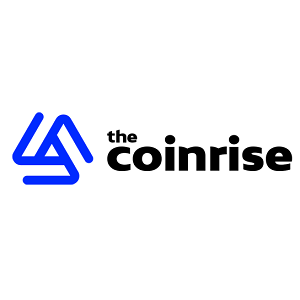OKX Delisting: Crucial Update on Five Perpetual Futures Pairs
7 min read
BitcoinWorld OKX Delisting: Crucial Update on Five Perpetual Futures Pairs In the fast-paced world of cryptocurrency, staying ahead of market changes is not just an advantage; it’s a necessity. A recent announcement from OKX Exchange has sent ripples through the trading community, signaling a significant shift for users engaged in perpetual futures. This isn’t just another routine update; it’s a crucial development that demands your immediate attention, especially if you hold positions in the affected assets. The news centers around an upcoming OKX delisting of five specific perpetual futures trading pairs, set to take effect on August 1st. Understanding the Upcoming OKX Delisting OKX, a prominent global cryptocurrency exchange, officially announced on its website that it will cease trading for several perpetual futures pairs. This move, scheduled for August 1, 2024, at 08:00 UTC , will impact traders holding positions in the following assets: RDNT/USDT Perpetual Futures IDU/USDT Perpetual Futures AIDOGE/USDT Perpetual Futures XCH/USDT Perpetual Futures CSPR/USDT Perpetual Futures For many, the term ‘delisting’ can sound alarming. In essence, it means that after the specified date and time, these particular trading pairs will no longer be available for trading on OKX’s perpetual futures market. Any open positions or pending orders related to these pairs will be automatically settled or canceled by the exchange. This is a critical piece of information for anyone involved in these specific markets, as it directly affects your investment strategy and potential exposure. Why Do Exchanges Announce an OKX Delisting? Delistings, while impactful for traders, are not uncommon in the dynamic crypto space. Exchanges like OKX make such decisions based on a variety of factors, primarily aimed at maintaining a healthy, liquid, and compliant trading environment. Understanding these reasons can help traders anticipate future market movements and make more informed decisions. Common reasons for an OKX delisting , or any exchange delisting, often include: Low Liquidity: If a trading pair consistently experiences low trading volume, it can lead to wider bid-ask spreads, making it difficult for traders to execute orders efficiently without significant price impact. Exchanges prefer to list assets that offer robust liquidity. Poor Project Performance: The underlying projects behind some tokens might fail to meet their development roadmap, lose community support, or show signs of instability. Exchanges continuously evaluate the viability and health of the projects they list. Regulatory Concerns: The global regulatory landscape for cryptocurrencies is constantly evolving. A token or project might fall out of compliance with new regulations in certain jurisdictions, prompting an exchange to delist it to avoid legal repercussions. Security Vulnerabilities: If a project’s smart contracts or network are found to have significant security flaws, an exchange might delist it to protect users from potential hacks or exploits. Market Manipulation Risks: Tokens susceptible to wash trading, pump-and-dump schemes, or other forms of market manipulation can be delisted to ensure fair trading practices. User Feedback and Demand: While less common for direct delistings, a lack of sustained user interest or significant negative feedback can also contribute to an asset’s removal. While OKX’s official announcement did not specify the exact reasons for the delisting of these five particular pairs, it’s reasonable to assume one or a combination of the above factors played a role in their decision-making process. What Does This OKX Delisting Mean for Your Portfolio? The immediate impact of this OKX delisting is clear: if you have open positions in RDNT/USDT, IDU/USDT, AIDOGE/USDT, XCH/USDT, or CSPR/USDT perpetual futures, you need to take action before August 1st. Failure to do so will result in the automatic settlement or cancellation of your positions, which might not occur at a favorable price. Here’s what this could mean for different types of traders: For Holders of Long Positions: If you’re long on any of these pairs, your position will be closed. Depending on the market price at the time of settlement, you could realize a profit or a loss. It’s crucial to monitor the price leading up to the delisting date. For Holders of Short Positions: Similarly, if you’re short, your position will also be closed. The outcome (profit or loss) will depend on the settlement price relative to your entry price. For Traders with Open Orders: Any pending limit orders, stop-loss orders, or take-profit orders for these pairs will be canceled. You will need to re-evaluate your strategy and potentially move your funds to other trading opportunities. For Those Considering New Trades: It goes without saying that initiating new positions in these specific perpetual futures pairs on OKX is highly risky and ill-advised as the delisting date approaches. Beyond the direct financial impact, such delistings can also affect market sentiment for the underlying tokens across other exchanges. Traders might interpret the delisting as a negative signal, potentially leading to increased selling pressure elsewhere. However, it’s also possible that traders might simply migrate to other exchanges where these tokens are still available for perpetual futures trading, albeit with potentially different liquidity profiles. Actionable Insights: How to Navigate the OKX Delisting Proactive management is key when an exchange announces a delisting. Here are some actionable steps you should consider taking to mitigate risks and protect your assets: Review Your Positions Immediately: Log into your OKX account and identify any open perpetual futures positions involving RDNT/USDT, IDU/USDT, AIDOGE/USDT, XCH/USDT, and CSPR/USDT. Consider Manual Closure: Instead of waiting for automatic settlement, which might occur at an unfavorable price, consider manually closing your positions before the delisting date. This gives you more control over your exit price. Cancel All Pending Orders: Ensure all your pending orders for these pairs are canceled to avoid unexpected executions or issues during the delisting process. Withdraw or Convert Affected Assets: If you hold the underlying spot assets (RDNT, IDU, AIDOGE, XCH, CSPR), consider withdrawing them to a personal wallet or transferring them to another exchange where they are still actively traded. Alternatively, you might convert them to stablecoins or other cryptocurrencies if you no longer wish to hold them. Stay Informed: Keep an eye on OKX’s official announcements for any further updates or clarifications regarding the delisting process. Diversify Your Portfolio: This event serves as a reminder of the importance of diversification. Relying too heavily on a few assets or a single exchange can expose you to significant risks during unexpected market changes. Re-evaluate Risk Management: Use this as an opportunity to review and refine your overall risk management strategy, including setting stricter stop-loss limits and understanding liquidation thresholds. Remember, the goal is to minimize potential losses and ensure a smooth transition of your assets. Timely action is paramount. The Broader Implications of Exchange Delistings While an individual OKX delisting of a few pairs might seem isolated, such events contribute to the broader narrative of market maturity and risk management in the cryptocurrency ecosystem. As the industry evolves, exchanges are increasingly focusing on compliance, liquidity, and the long-term viability of listed assets. This leads to a more robust, albeit sometimes more restrictive, trading environment. For traders, this means adapting to a landscape where active portfolio management and staying informed about exchange policies are more critical than ever. The ability to quickly react to announcements and adjust strategies can be the difference between preserving capital and incurring significant losses. Conclusion: Navigating Change with Confidence The upcoming OKX delisting of five perpetual futures pairs is a significant event for traders involved in RDNT, IDU, AIDOGE, XCH, and CSPR. While such announcements can cause apprehension, they are a normal part of a maturing market. By understanding the reasons behind delistings, assessing their potential impact on your portfolio, and taking proactive steps, you can navigate these changes with confidence. Always prioritize informed decision-making and robust risk management to protect your investments in the ever-evolving world of crypto trading. Stay vigilant, stay informed, and trade responsibly. Frequently Asked Questions (FAQs) Q1: What exactly does an OKX delisting mean for perpetual futures? A1: An OKX delisting for perpetual futures means that the specified trading pairs will no longer be available for trading on the exchange’s futures market after the announced date. All open positions will be automatically settled, and pending orders will be canceled. Q2: Which specific perpetual futures pairs are being delisted by OKX? A2: OKX is delisting RDNT/USDT, IDU/USDT, AIDOGE/USDT, XCH/USDT, and CSPR/USDT perpetual futures pairs. Q3: When will the OKX delisting take effect? A3: The delisting is scheduled for August 1, 2024, at 08:00 UTC. Q4: What should I do if I have open positions in these delisted pairs? A4: It is highly recommended to manually close your open positions before the delisting date to control your exit price. You should also cancel any pending orders related to these pairs. Q5: Can I still trade the underlying spot assets (RDNT, IDU, etc.) on OKX after the futures delisting? A5: The delisting announcement specifically refers to perpetual futures pairs. The availability of the spot trading pairs for these assets should be checked separately on the OKX website, as futures delisting does not automatically mean spot delisting. Q6: Why do crypto exchanges like OKX delist trading pairs? A6: Exchanges delist pairs for various reasons, including low liquidity, poor project performance, regulatory concerns, security vulnerabilities, or to mitigate market manipulation risks, ensuring a healthier trading environment. If you found this article insightful, please consider sharing it with your network! Your support helps us continue to provide valuable market insights and analysis to the crypto community. Spread the word and help others stay informed! To learn more about the latest crypto market trends, explore our article on key developments shaping the cryptocurrency price action. This post OKX Delisting: Crucial Update on Five Perpetual Futures Pairs first appeared on BitcoinWorld and is written by Editorial Team

Source: Bitcoin World



